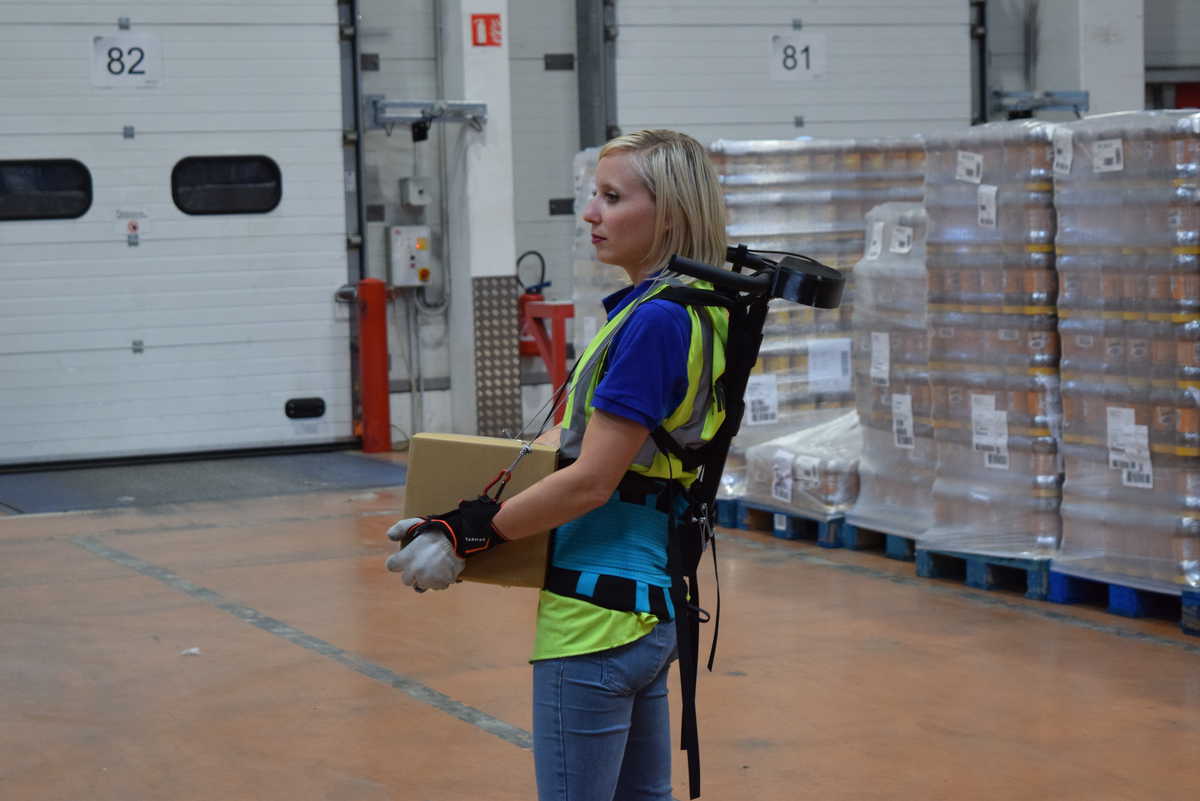Ergoskeletons may help warehouse workers to relieve physical stress and make their work more efficient

Story by: Vishnu Rajamanickam, Staff Writer @ FreightWaves
The holiday season is upon us, which in times of e-commerce and highly discounted retail storefronts would mean heavily concerted logistics operations behind the curtains. The primary stakeholders in this movement of freight are the workers at ground zero – be it truckers, warehouse employees, or last-mile delivery workers.
Workers within the logistics segment are often overworked and have little time to take off during their hectic schedules, which can take a toll on their bodies due to the constant physical strains they are under. This situation can be alleviated by teaching employees how to work ergonomically or by providing them with ergoskeletons that can relieve physical stress by taking away a part of the pressure of handling freight. Ergoskeletons are external devices that resemble bodysuits that can be worn by employees to assist with their work.
French-based third-party logistics provider FM Logistic has introduced the Ergoskel, an ergoskeleton designed to assist warehouse employees to move parcels and help protect their bodies from strain.
“The Ergoskel is an ergoskeleton designed to help warehouse workers lift parcels weighing up to 55 pounds. It works by transferring the load from the upper body to the pelvic area. FM Logistic and the University of Technology of Compiègne (UTC) in France developed the Ergoskel with one goal in mind – reduce work-related risks of musculoskeletal disorders (MSDs) for warehouse pickers and packers,” said Samya Bellhari-Trahin, the ergonomist at FM Logistic.
The genesis of Ergoskel was the need that FM Logistic saw to protect its employees, as it hired roughly 700 full-time warehouse workers every year in France alone. “One-third of our warehouse employees are pickers and packers. We tested six ergoskeletons available on the market. None of them proved completely adapted to our needs. So we opted to develop our own model together with the UTC,” said Bellhari-Trahin.
The timeline of the development of the Ergoskel was by no means immediate. FM Logistic approached UTC in 2017, spending the first few weeks studying the movement and postures of pickers using motion capture technology.
Once they had more information on how the human body worked, they designed a prototype that was tested in real work conditions across five different logistics sites in France. Bellhari-Trahin mentioned that the next step was to further improve on the device before considering a wider deployment.
To date, a total of 51 employees have tried on the Ergoskel. “Overall, their feedback is encouraging. We have determined that the Ergoskel can reduce strain on the back and upper muscles by 70%,” said Bellhari-Trahin.
That innovation may also help to shorten detention time for truckers, which is one of the top ten issues mentioned by ATRI studies about the trucking industry problems. With warehouse workers being able to work faster and more efficient, loading and unloading trucks will happen faster, and that may shorten waiting time.
Our conclusion is that technologies like ergoskeleton will help to improve work efficiency, detention time for truckers and reduce employees’ overworking stress in the whole supply chain and trucking industry, no doubt about it.
Read the full story HERE @ freightwaves.com
Source and credits: freightwaves.com / Vishnu Rajamanickam / iTrucker / Mario Pawlowski



